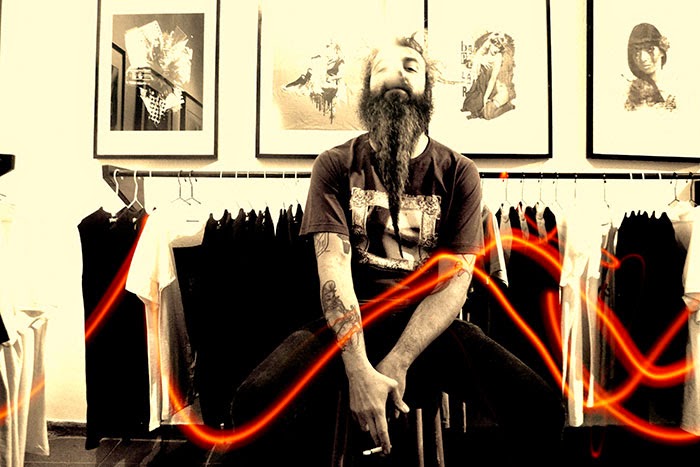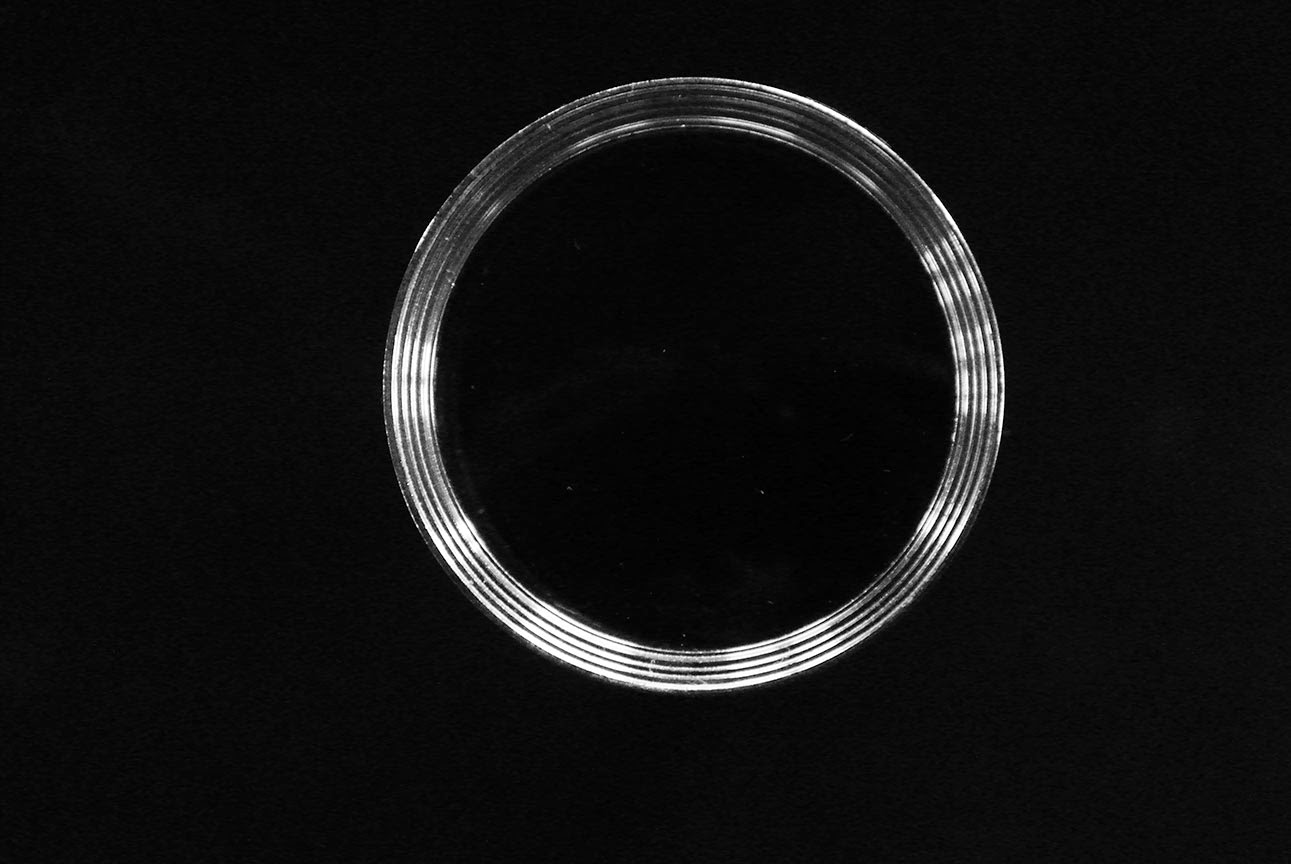|
Fact, Fiction and Truth: Contemporary Portraits examines the work of fourteen photographers, including two teams—whose art explores the nature of photographic truth. From family snapshots to driver’s license photo l.D.’s, pictures of people are among photographic most common subjects. For most of us they are also a concrete representation of our memories and tangible records of our past. Sufficient to rival the painted portrait in the 19th century, photographic portraiture from the time of its invention has been closely allied to the documentary tradition—creating a sense that it is in some way replicating the experience of seeing and faithfully recording the sitter. By capturing the external visage and with it an implied glimpse at the inner self, it presumes an impossible objectivity. The photographic portrait, whether shot with a camera or created on the computer, is a chimera—an image captured in light and time, completed by inference, closure, and projection in the mind of the viewer.
In an age when direct experience can be convincingly simulated and infotainment merges with the evening news, fact and fiction become more difficult to disentangle. In this exhibition some photographers vigorously investigate the artifice of photography with a clear awareness that the image is an untrustworthy representation—some with a deadpan acknowledgment of the irony involved. In the work of others, deviation from reality provides a metaphor through which to better understand the world. The works employ a full range of technical possibilities—from computer imaging to toy cameras. In all the works there is an awareness of the medium’s ability to show more than a surface.
At first glance Keith Cottingham’s portraits of adolescent boys who bear a strong family resemblance, seem to be the most traditional work in the exhibition. Placed against a black background, the waist-length figures seem stark yet familiar. On closer inspection there is something odd about them. These are not real children but “fictitious portraits” fabricated on the computer. The portraits are an amalgam of drawing, sculpted clay modeling and a sampling of eyes, hair, and skin tones from a range of individuals of various ages, genders and ethnic backgrounds. Digitally produced these children exist only in the photograph. They are all the more disturbing because they are not lifeless, but, in fact, appear to have a personality, an attitude—they could live next door.
More disturbing in appearance are Aziz + Cucher’s unearthly portraits of individuals and couples. Their mixture of truth and fiction confound some of the basic underlying assumptions about the nature of photography as a record. Created by digitally removing some of the subjects’ facial features—eyes, mouths, nostrils—then “grafting” skin in their place, these large, color-saturated Ektachrome portraits, photographed against stark backgrounds, simultaneously document each freckle and pore. They are a contradictory blend—real yet not human. Anthony Aziz and Sammy Cucher have created subjects who have limited means of interaction with the world. It is hard to know what these droid-like people are thinking—the viewer’s traditional mechanisms for reading the sitter’s mood or intent are also gone. They seem remote and alien.
Projection and closure play a role in finding a human face in the colorful, abstract blobs of plastic photographed in Laurie Simmons and Allan McCullum’s series, Actual Photographs. These improbable portraits, based on the faces of train set figurines which stand a half inch tall, have been captured with the aid of a medical microscope. While they provide a lighter take on portraiture, they also probe the innate tendency to find the human face in the sketchiest of details.
The blurted, highly animated subjects of Barbara Pollack are in essence “found” photographs. Captured with aging or damaged Polaroid cameras, Barbara Pollack’s Cibachrome Head Shots exploit the limitations of simple point and shoot cameras. The resulting images depict subjects outside the optimal circumstances—a four foot range, in a well-lighted setting, against a middle-gray ground—and document the effects of under-lighting and its resulting record of motion. Pollack focuses her attention on the “out-takes” or what might in the normal course of events be a discarded photo. In these portraits the distortions amplify and animate the sitters in unexpected ways.
Gary Schneider’s oddly lighted subjects appear to exist on multiple planes within the print. They are “painted with light” in total darkness—the result of long exposure times, during which the camera records changes in the lighting as well as changes in the subjects’ expressions during the pose. The erratic spotting with light creates a sense of drama and imparts a emotional intensity. Slight blurring suggests a living, breathing person, pushing the limits of the mechanical process and techniques of the camera.
John grill’s engrams, photographs based on hypothetical memory traces, suggest dreamlike apparitions. The work is produced through an intentional and controlled process of image deterioration. His technique often involves multiple steps of processing and reprocessing. The images in the Lehman exhibition include four shot from life and four appropriated from the television screen. Technically the work may involve – toy cameras, infrared film, bleaching and toning in the darkroom, and re-shooting with a pinhole camera. Grill’s chiaroscuro studies of the face reveal the subject slowly. The scale is small setting up an intimate relationship and drawing the viewer closer . The result is an ethereal portrait like those one sees when they are on the edge of sleep.
The fragmented juxtapositions of Louis Lussier’s large format prints also have a dream like logic to the imagery. Profiles placed against sea and sky become landscapes—mountains and deserts. Stairs lead out into darkness and shadow figures become surrogates for the self. Lussier’s sources range from film stills to old photographs. The recombined images suggest a narrative.
Also slow to unfold are the reticent, barely perceptible portraits of Adam Fuss’ Untitled (Black portrait) series. Only after prolonged scrutiny do the face and torso of a young child—sculpted by a dim light and buried within the black chemical surface of the gelatin silver print— begin to emerge from a ground of darkness. Once brought into view, the figure remains largely a captive of the photographic medium. With a blink of the eye it disappears again.
Isolated objects alluding to the portrait tradition stand as surrogates in the silver gelatin prints of J. John Priola. In one work, what appears to be an old family portrait of a man and a woman—like those which might be found on a dresser top or in a locket—suggests a narrative at which we can only guess. The double portrait, a woman behind a man, possibly a mother and her son, is creased and torn in half, beheading the sitters. In another work ,a broken porcelain bust of a young boy—an idealized representation—is cracked and hollow.
The issue of memory is also addressed in Bill Jacobson’s ongoing series, Interim Photographs. Here it is defined in terms of a dialectic between presence and absence. Fading images immersed in light deal with reality metaphorically. Photographed against a clinical white paper background, these portraits provide, in the words of the photographer, “a statement about personal desire and collective loss, a drawing on feelings around the tentativeness and vulnerability of life in the age of AIDS . . .” Jacobson’s black and white negatives, printed on color paper, lend a sepia tone to the photograph and a warm flesh tone to the portrait. In these diffuse images the form restates the content.
Tatiana Parcero’s photographs explore identity in feminist terms, contrasting the exterior surface of her face with schematic representations of female internal organs. Using her body as a subject, she superimposes engravings from 19th century medical books. Parcero’s self-portraits are veiled and coded by her anatomy.
Kathy Grove’s series of deconstructed images is also connected to a feminist perspective. In (The Other Series) After Smith, (The Other Series) After Kertesz and (The Other Series) AfterMuybridge, Grove simply removes the female subject leaving behind a small boy alone on the forest trail in Eugene Smith’s famous work, an empty sofa in Kertesz’, and empty drapery in various shapes created by a motion study in the case of the Muybridge. In After Lange, Grove transforms Dorothea Lange’s famous nineteen thirties icon of the Depression, Migrant Mother, Nipomo, California, into a glamorous model. With the composition essentially the same, Grove has executed a makeover by removing dirt, blemishes, and age, as well as, adding make-up. As with the other works, the additions and subtractions have provided a new sense of what is real, a different truth, and another fiction.
—Susan Hoeltzel
|
|
|
|
Aziz and Cucher
Pam and Kim, 1995
Digitized type c print
40 x 50″
Courtesy of Jack
Shainman Gallery
Ken, 1995
Digitized type c print
50 x 40″
Courtesy of Jack
Shainman Gallery
Rick, 1995
Digitized type c print
50 x 40″
Courtesy of Jack
Shainman Gallery
Bill and Patti, 1995
Digitized type c print
40 x 50″
Courtesy of Jack
Shainman Gallery
John Brill
Untitled, 1991
Sepia toned silver
print, 3 1/2 x 3 1/2″
Courtesy of Kent Gallery, Inc.
Portrait #4, 1991
Sepia toned silver print
3 3/8 x 4 3/8″
Courtesy of Kent Gallery, Inc.
Portrait #11, 1991
Sepia toned silver print
3 3/4 x 6 1/2″
Courtesy of Kent Gallery, Inc.
Untitled, (A), 1992
Sepia toned silver print
7 3/4 x 6 3/4″
Courtesy of Kent
Gallery, Inc.
Untitled, (B), 1992
Sepia toned silver print
8 3/4 x 6 1/2″
Courtesy of Kent gallery, Inc.
Untitled, (E), 1992
Sepia toned silver print
7 l/8 x 6 3/4″
Courtesy of Kent Gallery, Inc.
Untitled, (D), 1992
Sepia toned silver print
7 x 71/2″
Courtesy of Kent Gallery, Inc.
Portrait #5, 1991
Sepia toned silver print
4 1/4 x 4″
Courtesy of Kent Gallery, Inc.
Adam Fuss
Untitled (Black
Portrait), 1990
Gelatin silver print
24 x 20″
Courtesy of Robert
Miller Gallery
Keith Cottingham
Untitled (Single), 1993
Digital constructed
photograph 6l 1/2 x 53 1/4″
Ronald Feldman Fine Art Inc.
Untitled (Double),1993
Digital constructed photograph
61 l/2 x 53 1/4″
Ronald Feldman Fine Art Inc.
Kathy Grove
The Other Series: After Lange, 1989-90
Gelatin silver print
18 3/4 x 15″
Courtesy of P.P.O.W.
The Other Series: After Smith, 1992
Gelatin silver print 22 x 18 1/2″
Courtesy of P.P.O.W.
The Other Series: After Kertesz, 1989-90
Gelatin silver print 91/4 x 71/2″
Courtesy of P.P.O.W.
The Other Series: After Muybridge, 1992
Gelatin silver print 12 1/2 x 22 1/2″
Courtesy of P.P.O.W.
Bill Jacobson
Interim Portrait
#507, 1993
Chromogenic print
24 x 20″
Courtesy Julie Saul
Gallery
Interim Portrait #271, 1992
Chromogenic print
24 x 20″
Courtesy Julie Saul
Gallery
|









